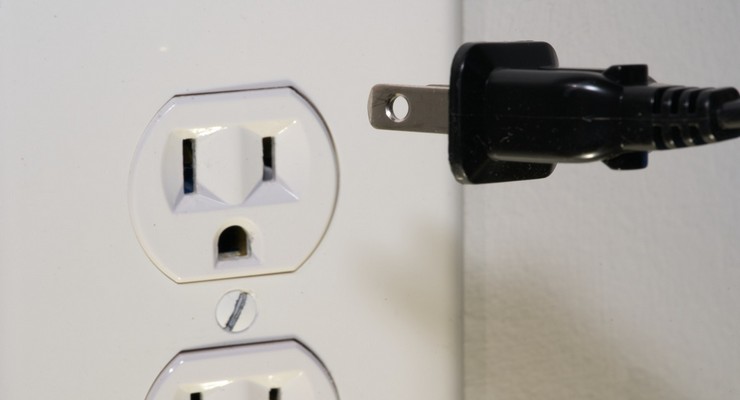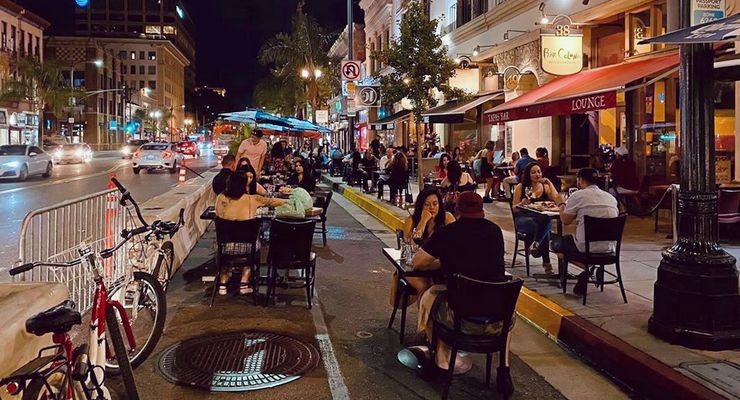 Jacqueline K. Barton, the Arthur and Marian Hanisch Memorial Professor of Chemistry and chair of the Division of Chemistry and Chemical Engineering at Caltech—a leader in studies of the chemistry of DNA—has been named one of seven recipients of the 2011 National Medal of Science, the highest honor bestowed by the United States government on scientists.
Jacqueline K. Barton, the Arthur and Marian Hanisch Memorial Professor of Chemistry and chair of the Division of Chemistry and Chemical Engineering at Caltech—a leader in studies of the chemistry of DNA—has been named one of seven recipients of the 2011 National Medal of Science, the highest honor bestowed by the United States government on scientists.
Barton was cited by the White House for her “discovery of a new property of the DNA helix, long-range electron transfer, and for showing that electron transfer depends upon stacking of the base pairs and DNA dynamics. Her experiments reveal a strategy for how DNA repair proteins locate DNA lesions and demonstrate a biological role for DNA-mediated charge transfer.”
“Each of these extraordinary scientists, engineers, and inventors is guided by a passion for innovation, a fearlessness even as they explore the very frontiers of human knowledge, and a desire to make the world a better place,” said President Barack Obama when announcing the awards. “Their ingenuity inspires us all to reach higher and try harder, no matter how difficult the challenges we face.”
“The entire Caltech community is proud of Professor Barton,” says Caltech president Jean-Lou Chameau, “and of this validation of what we’ve known for quite some time, which is that Professor Barton is an enormously talented scientist whose work and creativity have had a significant impact on our world and how we understand it.”
Over more than 20 years, Barton has used chemistry to piece together an understanding of the way double helical DNA can behave like a wire, allowing the transfer of electrons across long molecular distances. In fundamental work, which started by attaching simple metal complexes to DNA, she showed that electrons could migrate through DNA but that the conductivity was sensitive to mistakes or lesions in the DNA.
“We thought of the base pairs of DNA something like a stack of copper pennies,†Barton says, “so that if you interrupted the stack in some way—if you distorted even one penny—that would interrupt the conductivity of the stack.”
Similarly, Barton has shown that even single mistakes or mismatches within the nucleic acid sequence can prevent the transfer of electrons by creating a short circuit in the DNA wire. She has used that knowledge to build new electrical sensors capable of detecting not only DNA mutations but also proteins that can bind to and distort the DNA. Recently she has formulated a model that describes how nature might use DNA electron-transfer chemistry to locate DNA lesions using specific repair proteins.
The work has implications beyond the lab since mutations in the DNA repair machinery are associated with predispositions to diseases such as colon and breast cancer, as well as diseases associated with premature aging, such as xeroderma pigmentosum.
“That’s one of the important things about basic research,” Barton says, “you never know where it’s going to take you. This chemistry may be critical to DNA-based signaling across the genome to activate cellular responses to DNA damage. We started with this curious little experiment looking at simple metal complexes that did electron transfer, and now we’re talking about DNA damage that results from oxidative stress and how that leads to cancer.”
“Jackie’s research on molecular recognition and electron transfer on the double helix of DNA has led both to fundamentally new insights into chemistry and biology and to important new sensor technology,” says Ed Stolper, Caltech’s provost and the William E. Leonhard Professor of Geology. “Moreover, she has been an extraordinary leader for the chemical sciences at Caltech and around the world.”
Born and raised in New York City, Barton earned her AB in chemistry at Barnard College in 1974 and her PhD at Columbia University in 1978. She then carried out a postdoctoral fellowship at Bell Laboratories and Yale University. After starting her academic career at Hunter College, City University of New York, she rose through the academic ranks at Columbia University. Barton joined the Caltech faculty as a professor of chemistry in 1989 and was named the Arthur and Marian Hanisch Memorial Professor in 1997.
Barton is the recipient of numerous awards, including the 1988 American Chemical Society Award in Pure Chemistry, the 1985 NSF Waterman Award, and a MacArthur Foundation Fellowship in 1991. Barton was elected a fellow of the American Philosophical Society in 2000 and was elected to the National Academy of Sciences in 2002. She was appointed chair of the Division of Chemistry and Chemical Engineering at Caltech in 2009.
There have been 56 recipients of the medal, including Barton, who are alumni or faculty at Caltech. Barton is the first woman at Caltech to receive the National Medal of Science.
The National Science Foundation administers the National Medal of Science and its companion, the National Medal of Technology and Innovation, on behalf of the White House. Nominees are selected by a committee of Presidential appointees based on their extraordinary knowledge in and contributions to chemistry, engineering, computing, mathematics, and the biological, behavioral/social, and physical sciences.
Barton and her fellow medal recipients will receive their awards from the President at a White House ceremony later this year.













 0 comments
0 comments


